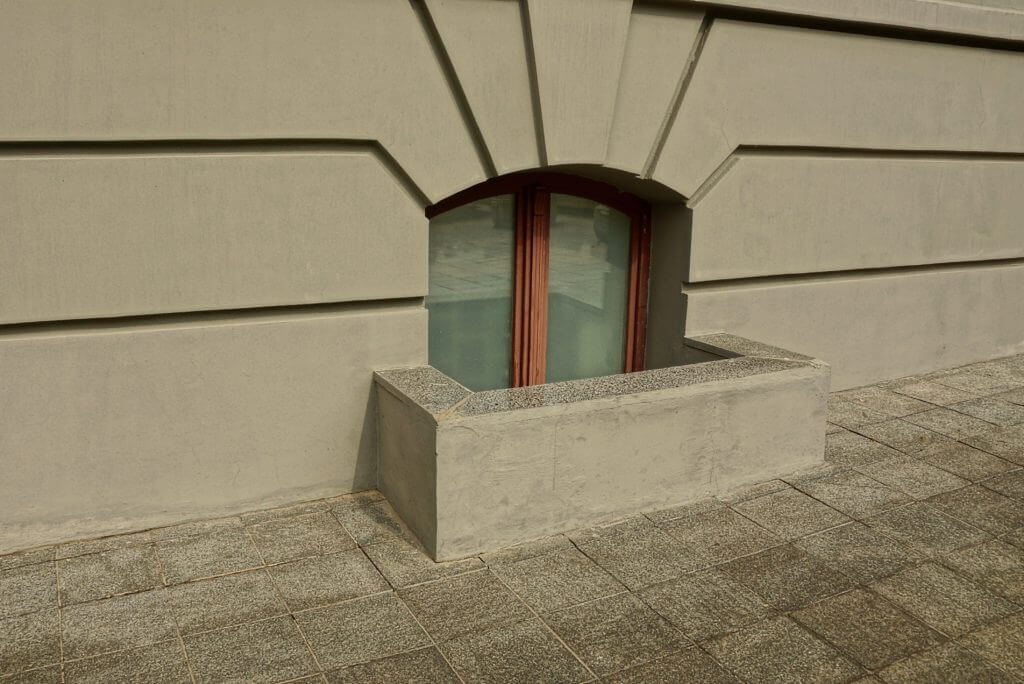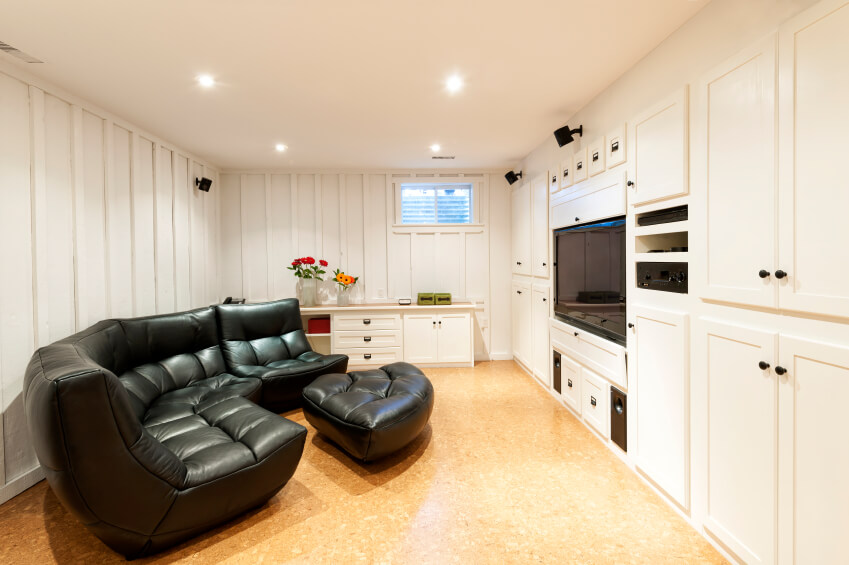Are you doing a windows project?
Modernize can pair you with three to four pros in your area, so you can compare options and save time and money.
Understanding Egress Window Codes & Sizes
Egress window size is set by building codes to ensure it is easy to get in and out of the window in case of an emergency. You must have an egress window installed in each bedroom as well as in attics or basements that are used as living area (or that have been converted into bedrooms). They don’t have to be available to storage rooms or attic space that are not used as often.
Because egress windows are required in homes for safety purposes, there are specific laws that indicate which home windows qualify as an egress window.
Egress windows must have openings that:
- Are at least 20 inches wide.
- Are at least 24 inches high.
- Have a net minimum clear opening space of five square feet for basements and ground floor bedrooms and 5.7 square feet for rooms on higher floors.
- Are not higher than 44 inches from the room’s finished floor.
Let’s break all of that information down below so you understand why this code exists and the minimum sizes your windows must meet.
Minimum Egress Window Size
An egress window will need to meet a specific window size requirement to abide by International Residential Code laws. These laws were last updated in 2024 and are reviewed every three years. Here is a breakdown of what qualifies as an egress window in terms of size by the IRC code for your home:
- Width and height. As stated above, a standard egress window size should have a minimum opening of 20 inches in width and 24 inches in height. This should allow for a person to easily exit in case of emergency or for first responders to get into the room quickly if need be.
- Window opening size. The minimum window opening size (or overall clear opening area) should be five square feet if on the ground floor or in the basement and 5 feet 7 inches square for any other floor. The size increases on higher floors to account for a ladder if you need rescue.
Egress Window Height from Floor
For egress window installation, the maximum height from the floor level needs to adhere to local building codes and regulations in your area. In many jurisdictions, maximum height is commonly set at no more than 44 inches from the floor level, as we laid out above. This allows for a person to easily access and climb out of the window.
Accessibility
Egress windows need to allow for a person to easily access the window from the floor without the use of tools or keys. The windows cannot be obstructed by objects such as furniture, curtains or security systems that can prevent someone from easily exiting in case of emergency.
Window Wells
If an egress window is installed below the ground level – for instance, in a basement – it may require a window well. This is to allow for proper clearance around the window upon exiting. In some areas, your egress window well may also require stairs or a ladder to allow a person to safely ascend to ground level.

Other Safety Features
In many areas, egress windows are required to have tempered or safety glass. This helps to prevent injury in case of emergency. Your local building codes may also require a release mechanism that allows someone to easily open the window without any tools.
Egress Window Requirements Based on the Room
As you’ve now seen laid out above, egress windows have different minimum clear opening sizes based on where they are installed. There is a common misconception that bedroom and basement egress windows are different sizes, but that’s not actually true.
Find the Right Contractor for Your Windows Project
Whether you’re ready to begin your project now or need some expert advice, our network of contractors are here to help. With a few simple questions, we’ll find the best local professionals for you
Let’s take a look at what you now know in a new way.
Egress Requirements for Bedroom Windows

If your bedroom is in a basement or on the ground floor of your home, it should have an opening that is:
- At least 20 inches wide.
- At least 24 inches high.
- 5 square feet.
If your bedroom is on a higher level of your home or in an attic, it should have an opening that is:
- At least 20 inches wide.
- At least 24 inches high.
- 5.7 square feet.
The difference is small, but important! As you shop for bedroom windows, do not make the mistake of ordering the same size for each bedroom if that size only provides a five-square-foot opening. Higher-level bedrooms need slightly more space than that.
Requirements for Egress Window in a Basement

Regardless of if you are using your basement as an office, a bedroom, or extra living space, it will always have the same requirements. The window should have an opening that is:
- A minimum of 20 inches wide.
- A minimum of 24 inches high.
- 5 square feet.
Final Thoughts on Egress Window Size
Egress window size requirements are set so that you and your family stay safe in case of emergency. And while you may not be able to get around egress window size, you can look into various types of egress window to find something that will suit your wall space, your taste, and your budget.
You can read our egress window guide to learn more about what they are as well as your options.
Find the Right Contractor for Your Windows Project
Whether you’re ready to begin your project now or need some expert advice, our network of contractors are here to help. With a few simple questions, we’ll find the best local professionals for you
Reviews from Real Homeowners
Welcome to Homeowner Resources! We are the Modernize blog. Modernize pairs more than 3 million homeowners a year with pre-vetted contractors in their area. This blog started because we believe homeowners should know everything about their homes, from how their HVAC works to which front door colors they might love. On Homeowner Resources, you can find information on every part of your home, right down to how you can negotiate with contractors to get the best price. Here's more about the blog.
Need a contractor? Learn more about how Modernize finds the right pro for you.


